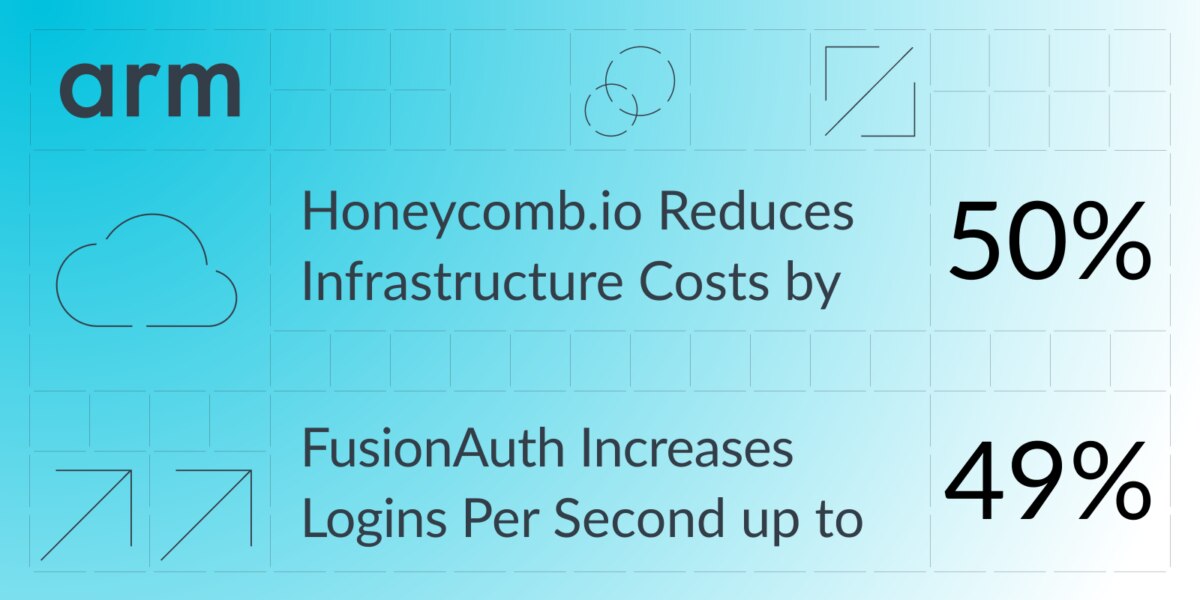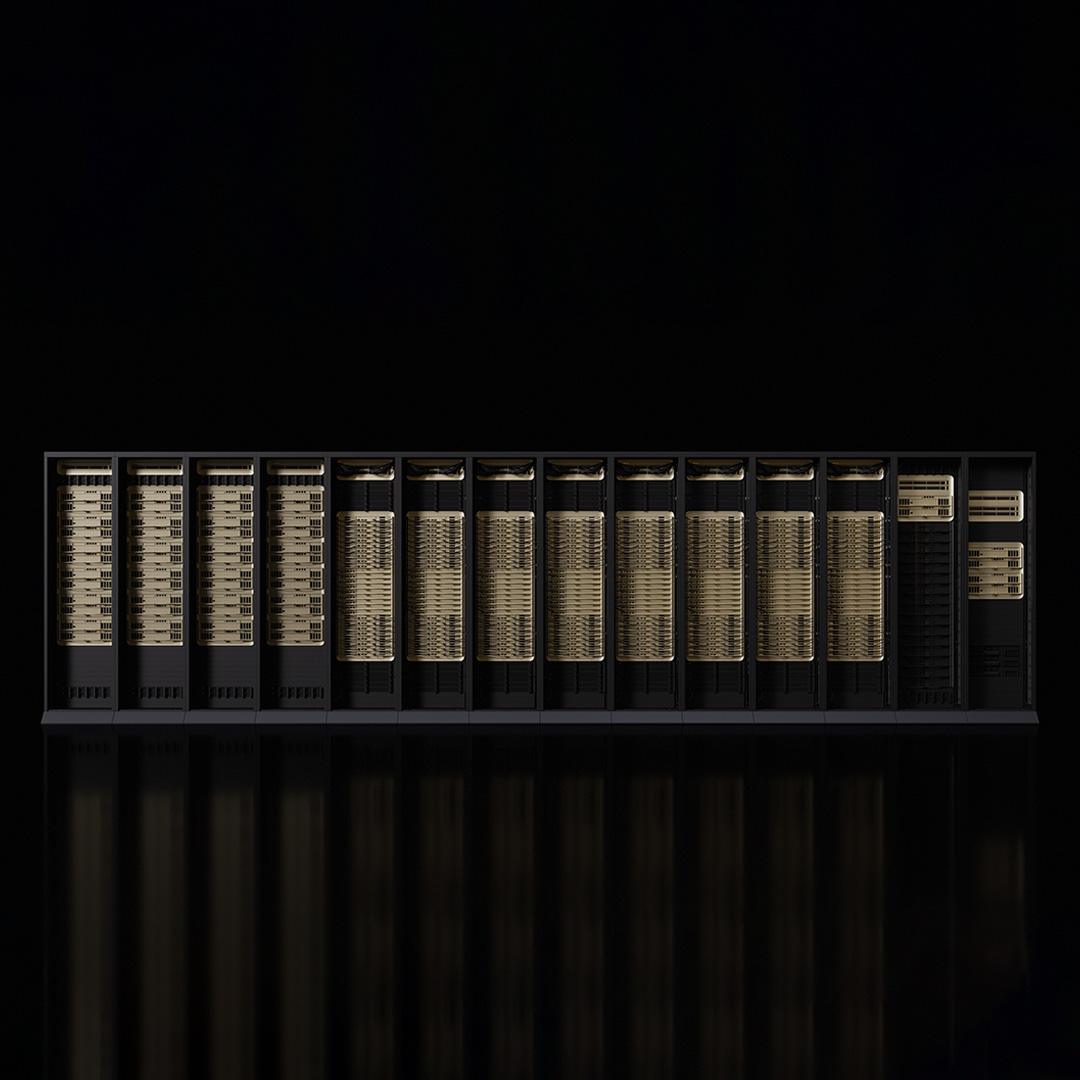Why Developers are Migrating to Arm

As a developer, you know how crucial it is to build applications that scale efficiently while keeping costs down. As the cloud landscape evolves, so does the technology running behind the scenes. In recent years, more and more companies are discovering the advantages of migrating their applications from x86-based architectures to Arm. With significant performance gains and lower total costs of ownership, Arm is quickly becoming the go-to architecture for companies looking to future-proof their workloads.
Discover how to easily migrate your applications to Arm for better performance and cost savings. Our Arm Migration Guide will help you ensure a smooth transition for containerized workloads, cloud-managed services, and Linux applications.
The Power of Arm: Performance and Efficiency
Arm processors, like those in AWS Graviton, Google Axion, and Microsoft Azure’s Ampere-based offerings, are designed to deliver superior performance at lower costs. With up to 60% energy savings and a 50% boost in performance, migrating to Arm-based cloud instances opens new opportunities for developers looking to optimize their workloads. Arm also offers a higher density of cores, which translates into improved scalability and the ability to handle more tasks simultaneously.
Moreover, Arm’s architecture is designed with flexibility in mind, allowing you to future-proof your development. Once you migrate your workloads to Arm, they are compatible across multiple cloud providers, giving you the agility to scale your applications on any Arm-based cloud platform, including AWS, Google Cloud, and Microsoft Azure.
Port to Arm Once, Open up our Entire Cloud Ecosystem and Workflows
The growing adoption of Arm-based solutions by major cloud providers has spurred increased software compatibility and optimization, making it easier for developers to leverage Arm’s strengths. For AI workloads specifically, Arm’s focus on specialized processing elements and heterogeneous computing allows for efficient execution of machine learning algorithms. This combination of power efficiency, scalability, and AI acceleration capabilities positions the Arm ecosystem as a compelling choice for organizations looking to optimize their cloud infrastructure and AI applications.
Customer Success on Arm

Honeycomb.io and FusionAuth both demonstrate how easy and beneficial it is to migrate to an Arm-based infrastructure.
- Honeycomb.io Reduces Infrastructure Costs by 50%
A leader in the observability space, Honeycomb transitioned from a legacy architecture to Arm-based AWS Graviton processors to handle its massive data processing needs. The results were immediate and striking. Honeycomb realized a 50% reduction in infrastructure costs while maintaining high performance and using fewer instances. This migration allowed Honeycomb to focus on what they do best—providing deep insights into system behavior—without worrying about spiraling infrastructure costs. - FusionAuth Increases Logins Per Second up to 49%
Migrating to Arm wasn’t just an experiment—it was a breakthrough. After load testing on Arm-based AWS Graviton instances, FusionAuth saw a 26% to 49% increase in logins per second compared to legacy systems. A seamless transition, the company also achieved 8% to 10% cost savings along the way. FusionAuth now runs the majority of its cloud infrastructure on Arm-based instances, enabling them to support a wide range of use cases from IoT to high-performance cloud platforms.
How Spotify optimizes cloud cost and performance with Google Cloud
Spotify scales fast and efficiently on Google Axion, built on Arm. Get the inside story now.
The Path to Migration: It’s Easier Than You Think
Migrating from legacy architectures to Arm is a smooth process that doesn’t require a complete code overhaul. Companies like Honeycomb and FusionAuth successfully made the transition using Arm’s strong ecosystem of developer tools and support for adapting code, testing, debugging, and optimizing performance. Whether you’re running Java, Golang, or other popular languages, Arm provides compatibility with your existing tech stack. The flexibility of Arm’s architecture ensures that your applications perform better with fewer resource demands, leading to improved price-performance ratios.
Developers should start by assessing their current software stack, including operating systems, programming languages, development tools, and dependencies. Next, they should set up a development environment that supports Arm architecture, which can be done using emulation, remote hardware, or physical Arm hardware. The migration process typically involves recompiling applications written in compiled languages like C/C++, Go, and Rust, while interpreted languages such as Python, Java, and Node.js may require minimal changes.
Developers should also ensure that all necessary libraries and dependencies are available for Arm. Testing and validation are crucial steps to identify and resolve any compatibility issues. Finally, developers can deploy their Arm-compatible workloads to cloud platforms like AWS, Google Cloud, and Microsoft Azure, which offer robust support for Arm-based instances.
Whether you are working on battery-powered devices, embedded systems, or IoT applications, migrating to Arm is a strategic decision that provides cost savings, superior performance, and sustainability. Developers around the world are choosing Arm to build more reliable, scalable, and power efficient applications.
Seamless Cloud Migration with Arm: More Performance, Less Energy
Migrate to Arm for better performance, energy efficiency, and multicloud support, with the tools and expertise to scale, cut costs, and future-proof your cloud deployments.
Any re-use permitted for informational and non-commercial or personal use only.












